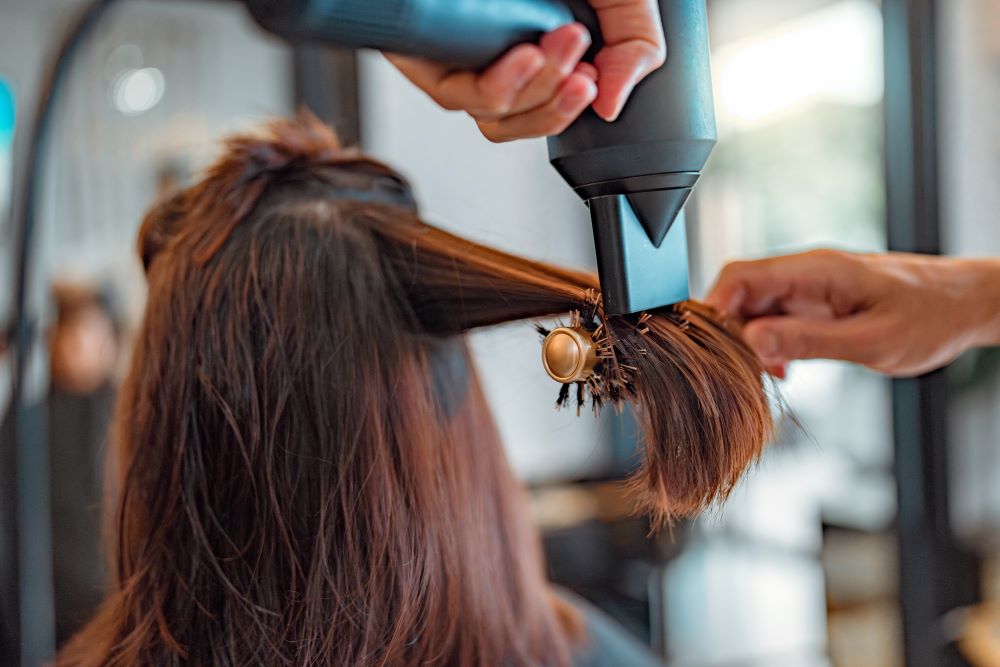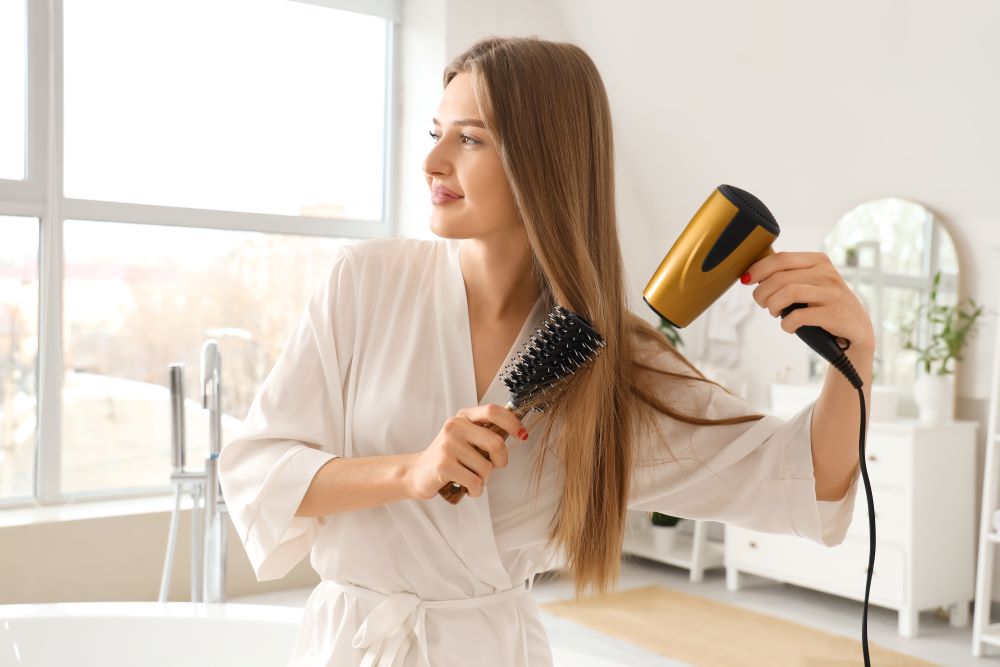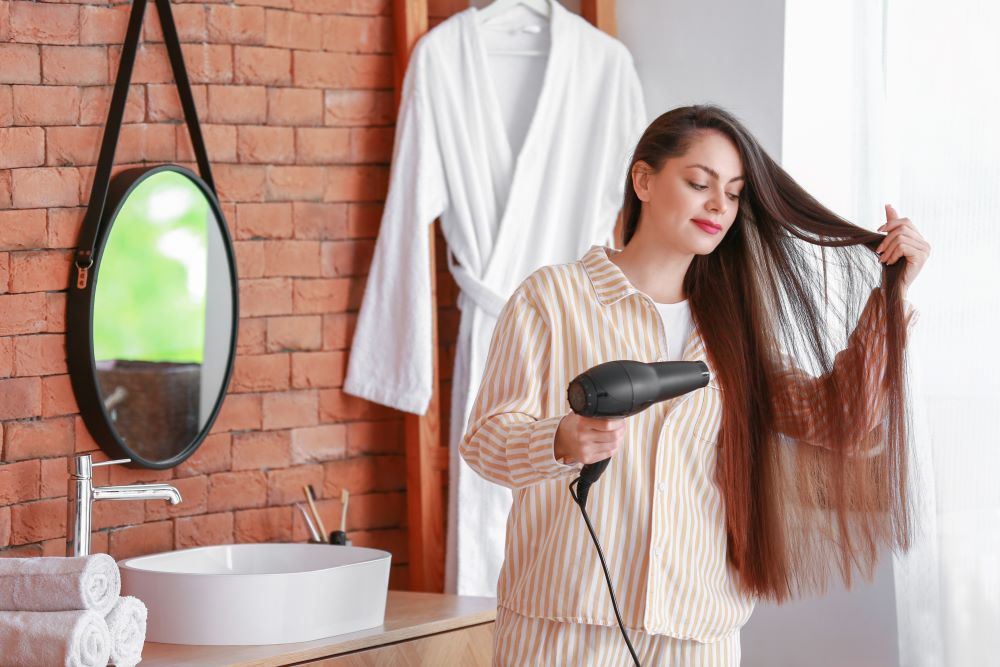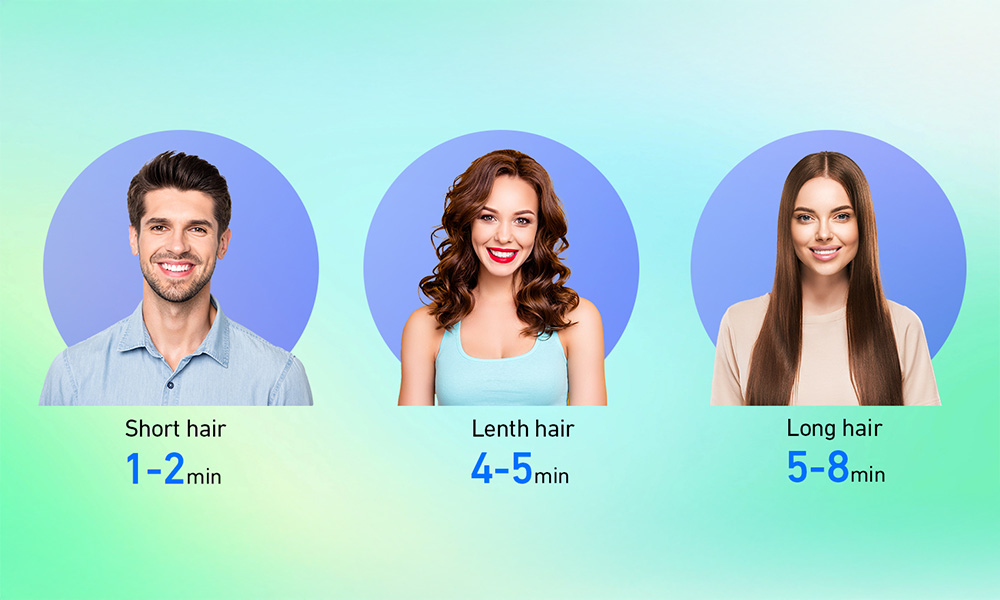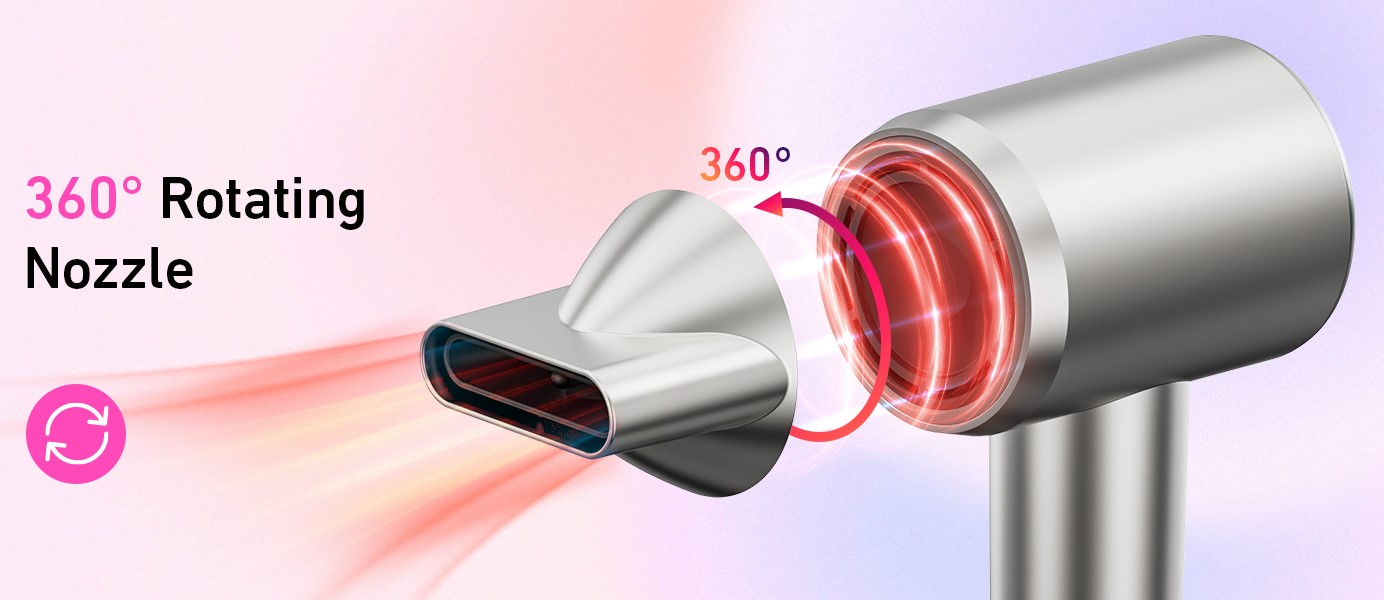
- Home
- Hair Dryer
- Hair Care Tips
- How to Safely Dry Hair for Children and Seniors
How to Safely Dry Hair for Children and Seniors
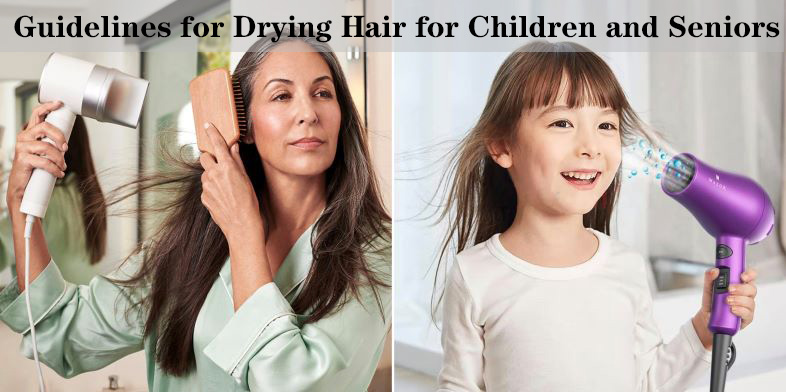
Drying hair might seem like a straightforward task, but when it comes to children and seniors, extra care is required to ensure safety and comfort. Both groups have delicate hair and sensitive scalps that can be easily damaged by improper drying techniques. This comprehensive guide will walk you through the safest methods to dry hair for children and seniors, considering the latest data, expert recommendations, and best practices.
Understanding the Unique Needs of Children and Seniors
Before diving into the techniques, it’s essential to understand why special care is necessary for these two groups.
Children:
Children’s hair is typically finer and more delicate than adults’. Their scalps are also more sensitive, making them more susceptible to heat damage. Additionally, young children might not yet have the patience to sit still for long drying sessions, necessitating a quick but gentle approach.
Seniors:
As we age, hair often becomes thinner, more fragile, and prone to dryness. The scalp also becomes more sensitive, and older adults might be dealing with conditions like alopecia, psoriasis, or other skin conditions that require special attention during hair drying.
The Importance of Proper Hair Drying Techniques
Improper hair drying can lead to several issues, such as:
Heat Damage: Excessive heat can cause hair to become dry, brittle, and prone to breakage.
Scalp Irritation: Using too much heat or harsh drying techniques can irritate the scalp, leading to discomfort or exacerbating existing conditions.
Hair Breakage: Aggressive drying methods can cause hair strands to break, especially in individuals with fine or thinning hair.
Moisture Loss: Over-drying hair can strip it of its natural oils, leading to dryness and frizz.
Section 1: Pre-Drying Preparations
1.1 Choosing the Right Shampoo and Conditioner
Before you even start drying, it’s crucial to use the right hair care products. For both children and seniors, opt for shampoos and conditioners that are:
Mild and Sulfate-Free: Harsh chemicals can strip the hair of its natural oils. Look for gentle, sulfate-free formulas that are designed for sensitive scalps.
Hydrating: Moisture is key, especially for seniors. Choose products with hydrating ingredients like aloe vera, glycerin, or coconut oil.
Tangle-Free Formulas: For children, a conditioner that helps detangle hair will make the drying process much smoother.
1.2 Towel Drying: The First Step
After washing the hair, the first step in the drying process is towel drying. Here’s how to do it safely:
Use a Soft, Microfiber Towel: These towels are gentler on the hair and absorb water more efficiently than regular towels.
Blot, Don’t Rub: Instead of vigorously rubbing the hair, gently blot it with the towel to remove excess water. This helps prevent hair breakage and reduces frizz.
Section the Hair: If the hair is long or thick, sectioning it can make the drying process easier and more effective.
1.3 Detangling Hair Safely
Detangling hair when it’s wet requires extra caution:
Use a Wide-Tooth Comb: This type of comb is gentle on the hair and helps prevent breakage.
Start from the Ends: Begin combing at the ends of the hair and work your way up to the roots. This method minimizes pulling and reduces the risk of damage.
Consider a Detangling Spray: For children, a detangling spray can make the process quicker and less painful.
Section 2: Safe Hair Drying Techniques for Children

When drying hair for children, it’s crucial to prioritize safety and comfort. Children’s hair and scalps are more sensitive than adults’, requiring extra caution to prevent damage or discomfort. The following comprehensive guide outlines the safest and most effective techniques for drying children’s hair, from selecting the right tools to applying proper techniques.
2.1 Selecting the Right Hair Dryer for Children
Choosing the right hair dryer is the first step in safely drying a child’s hair. Consider the following features when selecting a hair dryer:
Adjustable Heat Settings: A hair dryer with multiple heat settings allows for greater control over the temperature. It is vital to use the lowest effective heat setting to avoid overheating the child’s scalp or damaging the hair.
Cool Shot Feature: A cool shot button is a useful feature that helps lock in moisture and add shine without exposing the hair to heat. Using a cool shot periodically during the drying process can help minimize heat exposure.
Ionic Technology: Hair dryers with ionic technology emit negative ions that break down water molecules, which can speed up drying time and reduce frizz. This technology is particularly beneficial for maintaining the hair’s natural moisture balance.
Lightweight and Ergonomic Design: A lightweight hair dryer is easier to handle and reduces fatigue, especially if the drying process takes a while. An ergonomic design also ensures comfort and ease of use for both the child and the person drying their hair.
Low Noise Level: Hair dryers that operate at a lower noise level are less likely to startle or frighten young children. A quiet hair dryer can make the experience more pleasant, especially for children who are sensitive to loud noises.
2.2 Preparing for Hair Drying
Proper preparation is key to a safe and effective hair drying process. Follow these steps before using a hair dryer:
Gently Towel Dry the Hair: After washing the hair, use a soft, microfiber towel to gently blot the hair dry. Avoid rubbing the hair vigorously, as this can cause tangling and breakage. Microfiber towels are highly absorbent and reduce the need for prolonged exposure to a hair dryer.
Detangle the Hair: Use a wide-tooth comb or a detangling brush to gently remove any knots or tangles. Start from the ends of the hair and work your way up to the roots to minimize pulling and reduce the risk of breakage. Consider using a detangling spray to make the process smoother and less painful for the child.
Section the Hair: Divide the hair into manageable sections using hair clips. This approach allows for more even drying and ensures that no area is exposed to heat for too long.
2.3 Proper Hair Drying Technique
Once the hair is prepared, it’s time to begin the drying process. Here are detailed steps for safely drying a child’s hair:
Start with the Lowest Heat Setting: Begin drying with the dryer set to the lowest heat setting. This is especially important for young children with delicate hair and sensitive scalps. If the hair dryer has a cool air setting, start with that to remove excess moisture without any heat exposure.
Maintain a Safe Distance: Hold the hair dryer at least 6 to 8 inches away from the child’s scalp. Keeping the dryer at a safe distance helps prevent overheating and reduces the risk of scalp burns.
Keep the Dryer Moving: Avoid holding the dryer in one spot for too long. Instead, keep the dryer moving continuously to distribute heat evenly across the hair. This technique helps prevent hot spots that could damage the hair or irritate the scalp.
Use a Diffuser for Curly or Wavy Hair: For children with curly or wavy hair, a diffuser attachment can help maintain the natural curl pattern and reduce frizz. Attach the diffuser to the dryer and use it on a low heat setting. Gently cup sections of the hair with the diffuser and lift it towards the scalp. This method adds volume without causing damage.
Dry in Sections: Work through each section of the hair methodically, starting from the roots and working towards the ends. This approach ensures thorough drying while minimizing the time spent on each area, reducing the overall exposure to heat.
Alternate Between Heat and Cool Air: If the hair dryer has a cool shot button, alternate between warm and cool air while drying. This technique not only reduces heat exposure but also helps to set the hair in place, adding shine and reducing frizz.
Monitor the Child’s Comfort: Continuously check in with the child to ensure they are comfortable and not feeling any excessive heat or discomfort. If the child expresses any discomfort or the scalp appears red, stop the drying process immediately and allow the hair to air dry for a while.
2.4 Additional Tips for Safe Hair Drying
To further ensure the safety and comfort of the child during the hair drying process, consider the following additional tips:
Avoid Using High Heat: High heat settings are unnecessary and potentially harmful for children’s delicate hair and sensitive scalps. Always use the lowest effective heat setting.
Consider Air Drying When Possible: If time allows and the weather is appropriate, consider letting the child’s hair air dry instead of using a hair dryer. Air drying eliminates the risk of heat damage and is often the safest option.
Use Heat Protectant Products: If a hair dryer must be used regularly, consider applying a heat protectant spray to the child’s hair before drying. These products create a barrier that helps protect the hair from heat damage.
Create a Calm Environment: Make the hair drying experience as calm and stress-free as possible. Use toys, music, or storytelling to distract and entertain the child during the process. A calm environment reduces anxiety and makes the child more cooperative.
Practice Patience: Rushing through the drying process increases the likelihood of mistakes and accidents. Take your time and be patient to ensure a safe and effective drying experience.
Section 3: Safe Hair Drying Techniques for Seniors
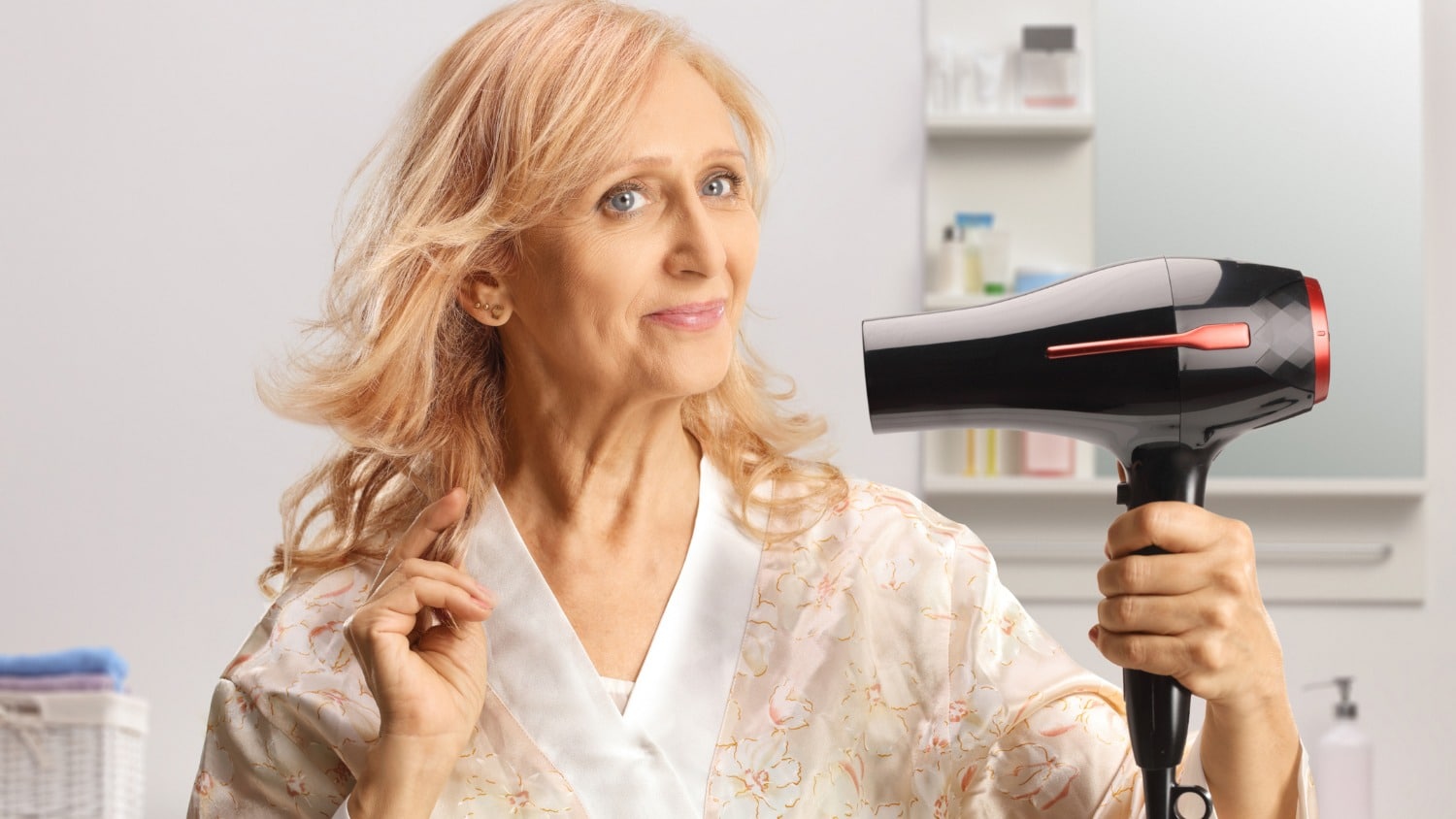
As we age, our hair and scalp undergo significant changes, becoming more fragile and sensitive. Seniors often face unique challenges, such as thinning hair, scalp sensitivity, and various health conditions that can affect hair care routines. Therefore, it is crucial to adopt safe hair drying techniques that protect both the hair and scalp while catering to the specific needs of older adults. This section provides a detailed, professional, and objective guide on safely drying hair for seniors, considering the latest research and expert recommendations.
3.1 Selecting the Right Hair Dryer for Seniors
Choosing the appropriate hair dryer is the foundation of a safe hair-drying routine for seniors. Here are key features to look for when selecting a hair dryer for older adults:
Ionic Technology: Ionic hair dryers are highly recommended for seniors as they emit negative ions that break down water molecules more efficiently, reducing drying time. This technology helps retain moisture in the hair, reducing frizz and static while minimizing the risk of dryness and damage, which is especially beneficial for aging hair.
Lightweight Design: Seniors may experience decreased hand strength or joint issues, such as arthritis, which can make handling a heavy hair dryer challenging. A lightweight dryer is easier to maneuver, reducing strain on the hands and arms and making the drying process more comfortable.
Ergonomic Grip: An ergonomically designed hair dryer with a comfortable grip can help seniors maintain a firm, secure hold, minimizing the risk of dropping the dryer and preventing accidents.
Adjustable Heat and Speed Settings: A dryer with multiple heat and speed settings allows for better control, enabling the user to choose the most appropriate setting for their hair type and scalp sensitivity. For seniors, it’s advisable to use the lowest heat setting to avoid heat damage.
Cool Shot Button: The cool shot button provides a burst of cool air that can help set the hair in place, reduce frizz, and lock in moisture. This feature is particularly useful for seniors who need to minimize heat exposure due to fragile hair or scalp conditions.
3.2 Preparing for Hair Drying
Proper preparation before drying is essential to minimize hair damage and ensure a safe and effective process for seniors. Here’s how to prepare:
Towel Dry Gently: After washing the hair, gently blot it with a soft, microfiber towel to remove excess water. Avoid vigorous rubbing, as this can cause hair breakage and scalp irritation. Microfiber towels are softer and more absorbent than regular towels, making them ideal for delicate, aging hair.
Detangle with Care: Use a wide-tooth comb or a soft-bristle brush to detangle the hair gently. Start from the ends and work your way up to the roots to reduce pulling and minimize breakage. Consider applying a detangling spray or leave-in conditioner to help ease the combing process and add moisture to the hair.
Section the Hair: Dividing the hair into smaller sections before drying can make the process more manageable and ensure even drying. This method reduces the amount of time each section is exposed to heat, minimizing potential damage.
3.3 Proper Hair Drying Technique
When it comes to drying hair for seniors, a gentle and methodical approach is key. Follow these steps to ensure a safe and effective drying process:
Begin with Low Heat: Always start with the lowest heat setting on the dryer. Seniors’ hair is often more susceptible to heat damage due to its delicate nature, and lower heat settings help prevent excessive dryness and breakage.
Keep the Dryer Moving: Constantly move the dryer in a back-and-forth motion rather than holding it in one place. This technique helps distribute heat evenly, preventing hot spots that could damage the hair or cause scalp discomfort.
Maintain a Safe Distance: Hold the dryer at least 8-10 inches away from the scalp. Keeping a safe distance ensures the heat is not too intense, reducing the risk of burns or irritation to the scalp.
Use a Diffuser for Volume: For seniors with thinning hair, a diffuser attachment can be beneficial. It helps create volume and lift at the roots without using high heat, which can damage delicate hair. The diffuser disperses the heat gently, providing a more controlled and safer drying experience.
Dry in Sections: Working through the hair in sections ensures that each part is thoroughly dried without overexposing any area to heat. Start at the roots and gently work your way to the ends, allowing each section to dry evenly.
Incorporate Cool Air: Regularly switch to the cool shot function during the drying process. Cool air helps set the hairstyle in place and reduces the risk of heat damage. Alternating between warm and cool air can also enhance the hair’s natural shine and reduce frizz.
3.4 Special Considerations for Seniors with Health Conditions
Many seniors have health conditions that require additional precautions when drying their hair. Here are some specific considerations:
Arthritis and Joint Issues: For seniors with arthritis or limited hand mobility, a lightweight dryer with an ergonomic grip is essential. Additionally, consider a dryer stand or a hands-free drying option to reduce strain.
Scalp Sensitivity or Conditions: Seniors with sensitive scalps or conditions such as psoriasis, eczema, or scalp dermatitis should avoid high heat settings and direct airflow to affected areas. Gentle, diffused air and a scalp-friendly drying technique can prevent exacerbating these conditions.
Neuropathy or Limited Sensation: Seniors with neuropathy or limited sensation in their hands may not feel the heat from the dryer as intensely. Caregivers or family members should monitor the drying process to ensure that the dryer is not too close to the scalp and that heat settings are appropriate to avoid burns.
Cardiovascular Concerns: Seniors with cardiovascular concerns should avoid prolonged standing during hair drying, which can lead to fatigue or dizziness. Sitting comfortably in a chair while drying hair is a safer option. Additionally, taking breaks during the drying process can help prevent overheating and reduce fatigue.
Section 4: Common Mistakes to Avoid
Avoiding common mistakes is key to safely drying hair for children and seniors:
Using High Heat: High heat settings can cause damage to delicate hair and sensitive scalps. Always opt for the lowest effective heat setting.
Holding the Dryer Too Close: Holding the dryer too close to the scalp can lead to burns and discomfort. Always maintain a safe distance.
Over-Drying: Over-drying can strip the hair of its natural oils, leading to dryness and breakage. Stop drying as soon as the hair is no longer damp.
Neglecting Heat Protection: If using heat regularly, it’s important to apply a heat protectant spray to minimize damage.
Section 5: Post-Drying Care and Maintenance
5.1 Moisturizing the Scalp and Hair
After drying, it’s essential to replenish moisture:
Use a Leave-In Conditioner: A leave-in conditioner can help maintain moisture levels and prevent frizz.
Apply Hair Oil: For both children and seniors, a light hair oil can help nourish the hair and keep it looking healthy.
Massage the Scalp: A gentle scalp massage can stimulate blood flow and promote a healthy scalp.
5.2 Regular Hair Maintenance
Regular maintenance is crucial for healthy hair:
Trim Regularly: Regular trims help prevent split ends and keep the hair looking neat.
Use Gentle Hair Accessories: Avoid tight hair ties or clips that can pull on the hair and cause breakage.
Protect the Hair While Sleeping: For seniors, using a silk pillowcase can reduce friction and prevent hair breakage during sleep.
Section 6: Expert Tips and Best Practices
Incorporate these expert tips into your hair drying routine:
Be Patient: Rushing through the drying process can lead to mistakes. Take your time to ensure the hair is dried safely and evenly.
Tailor Techniques to the Individual: Consider the specific needs of the child or senior when selecting tools and techniques.
Stay Informed: Keep up with the latest research and recommendations to ensure you’re using the safest and most effective methods.
Conclusion
Drying hair safely for children and seniors requires careful attention to detail and an understanding of their unique needs. By following the guidelines outlined in this comprehensive guide, you can help protect their hair from damage, ensure their comfort, and maintain healthy, beautiful hair. Remember, the key is to be gentle, patient, and attentive to their specific needs, ensuring a safe and pleasant hair-drying experience every time.
Popular Post

Ultimate Guide to Using a Hair Dryer with Nozzle for Styling
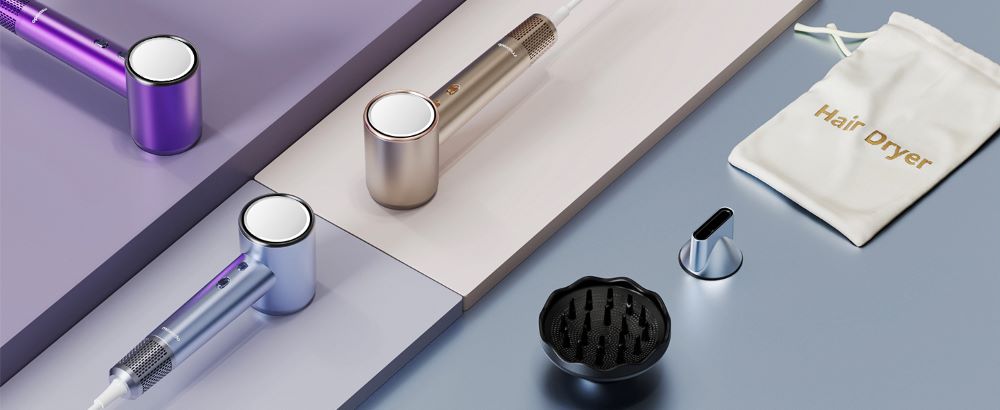
The Benefits of Using a Hair Dryer with a Diffuser
